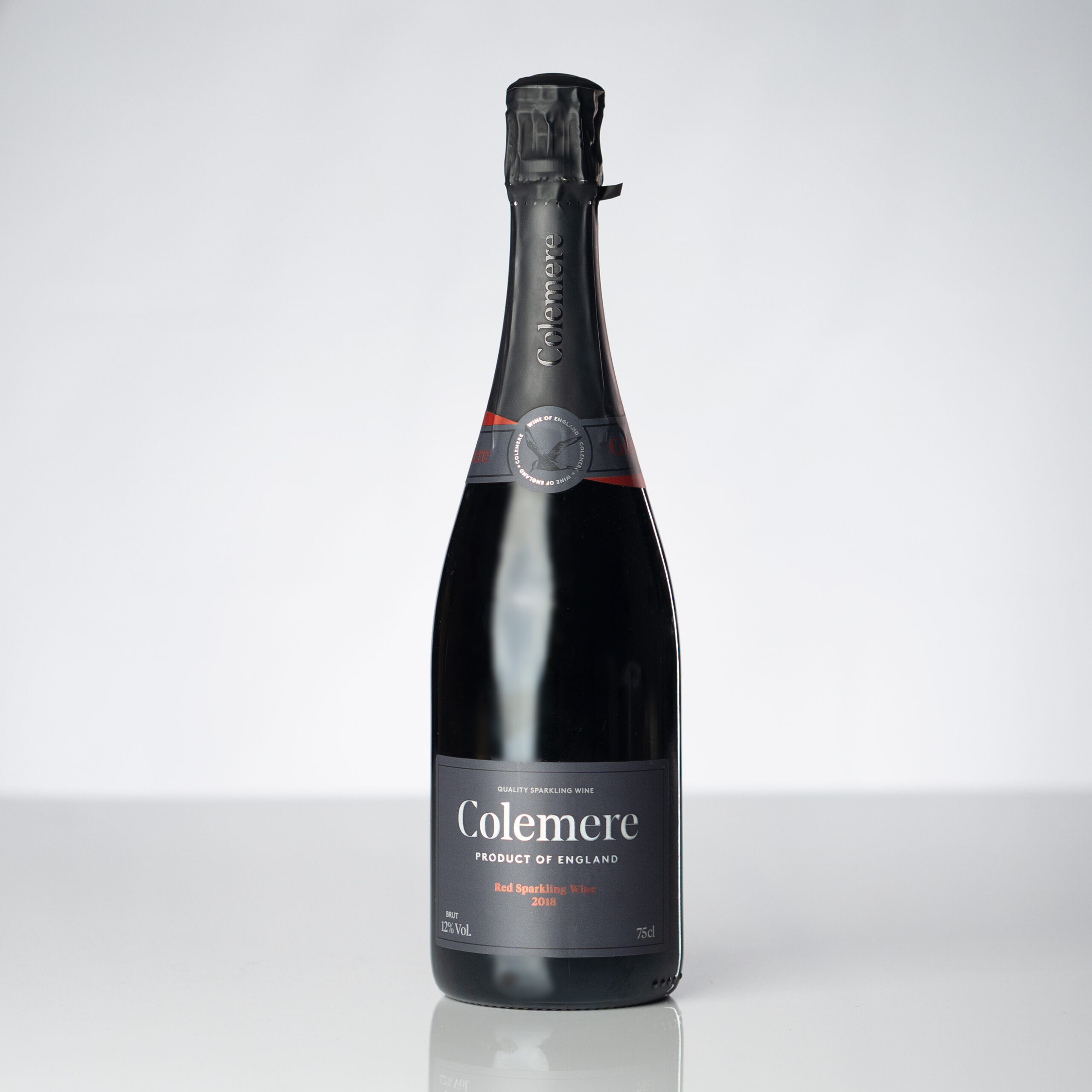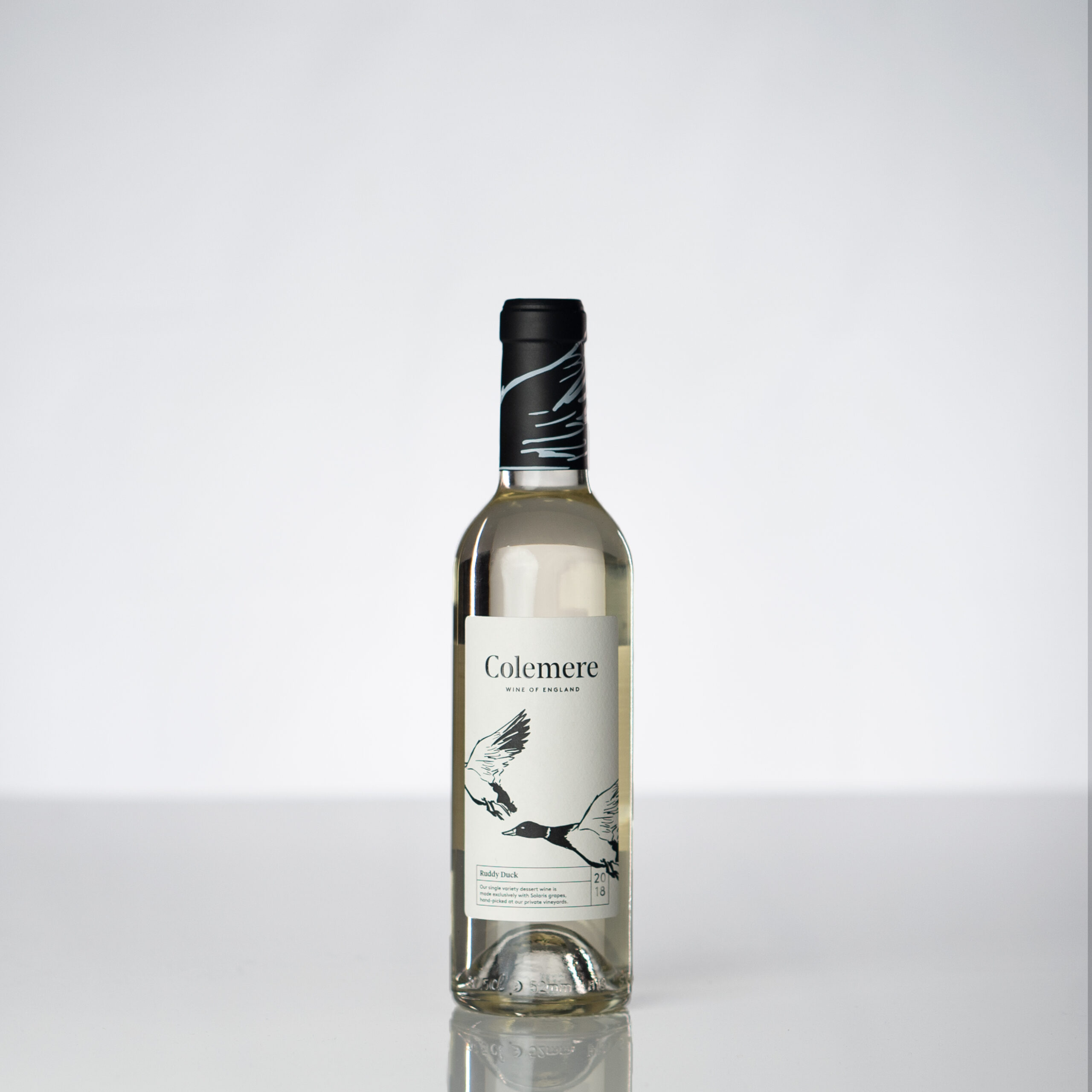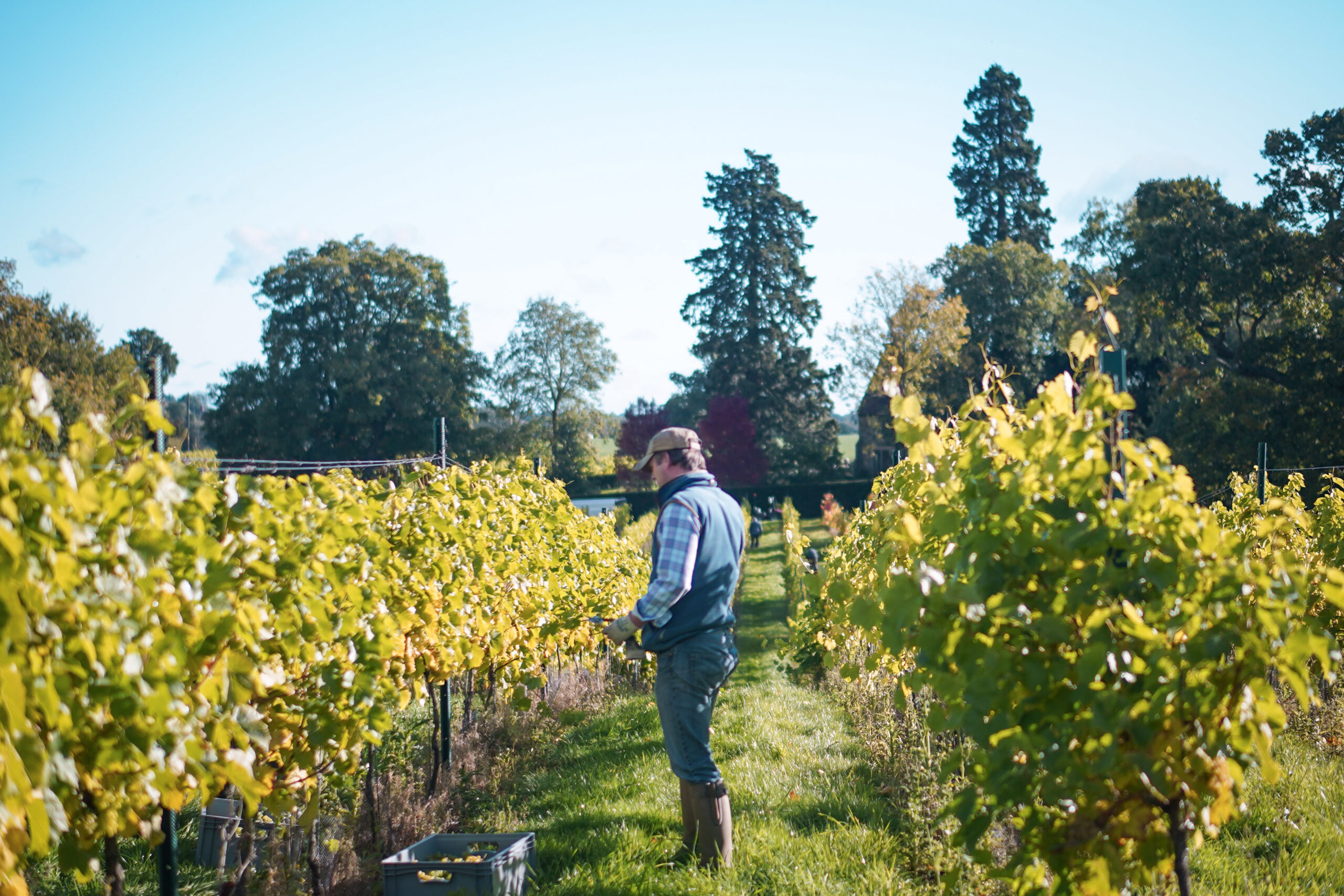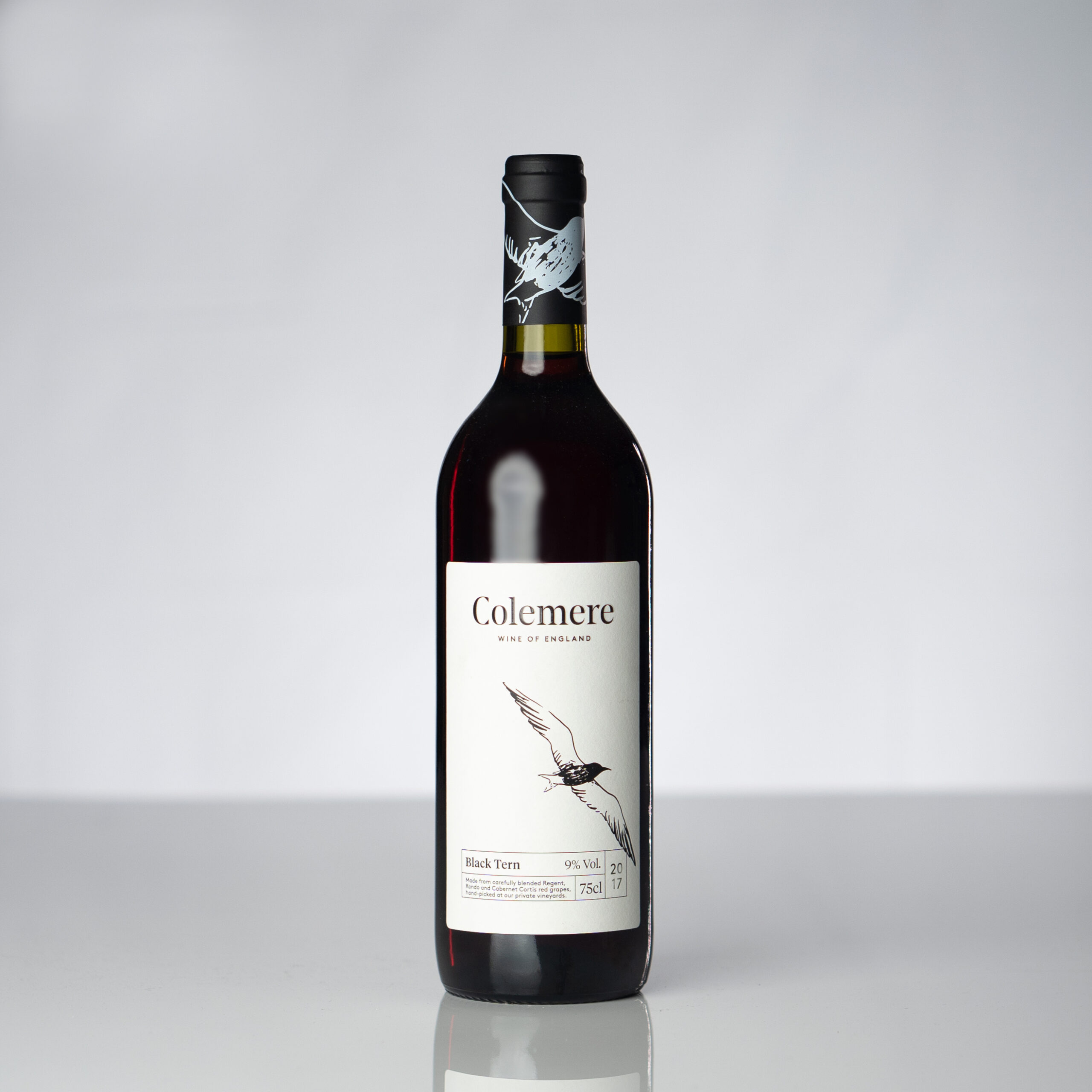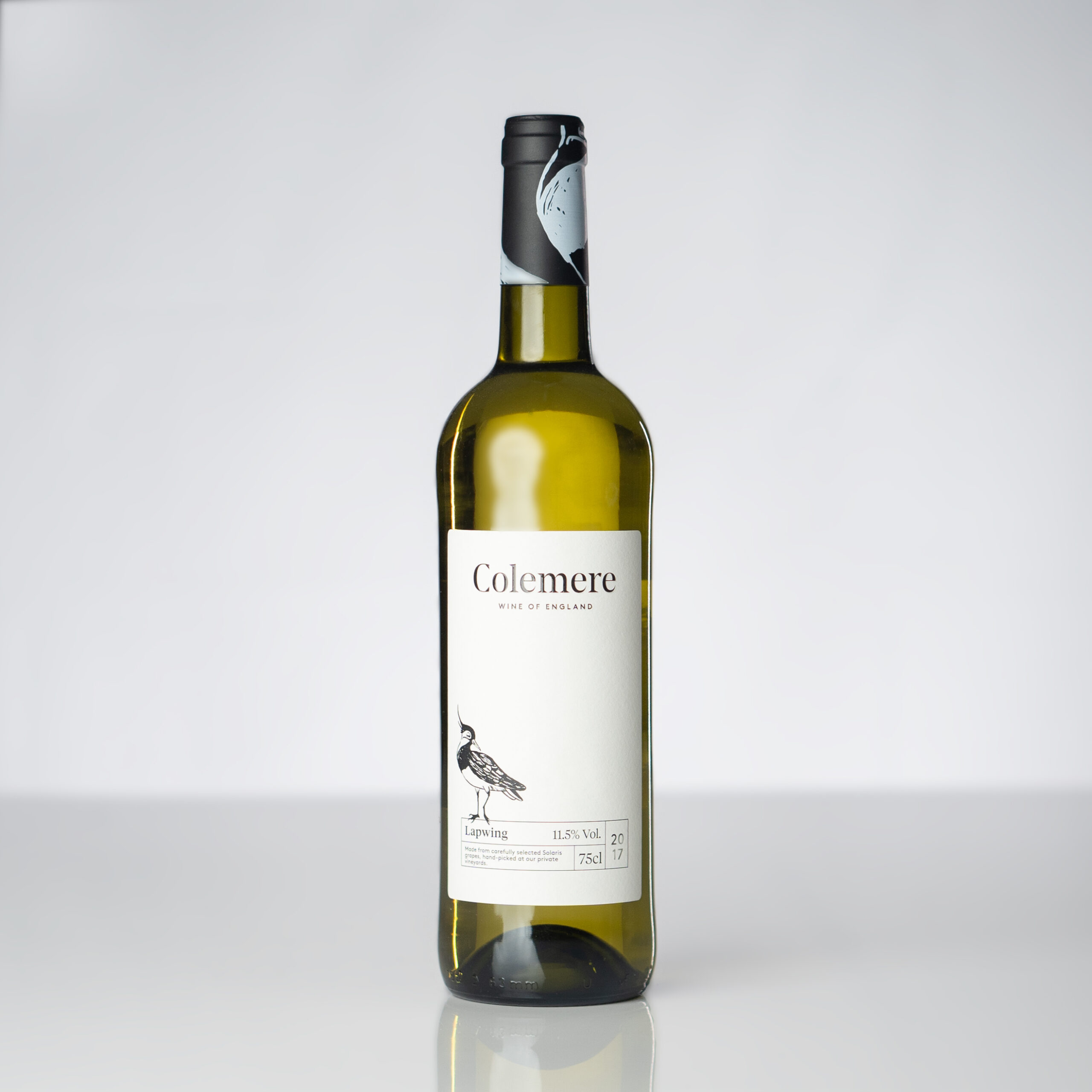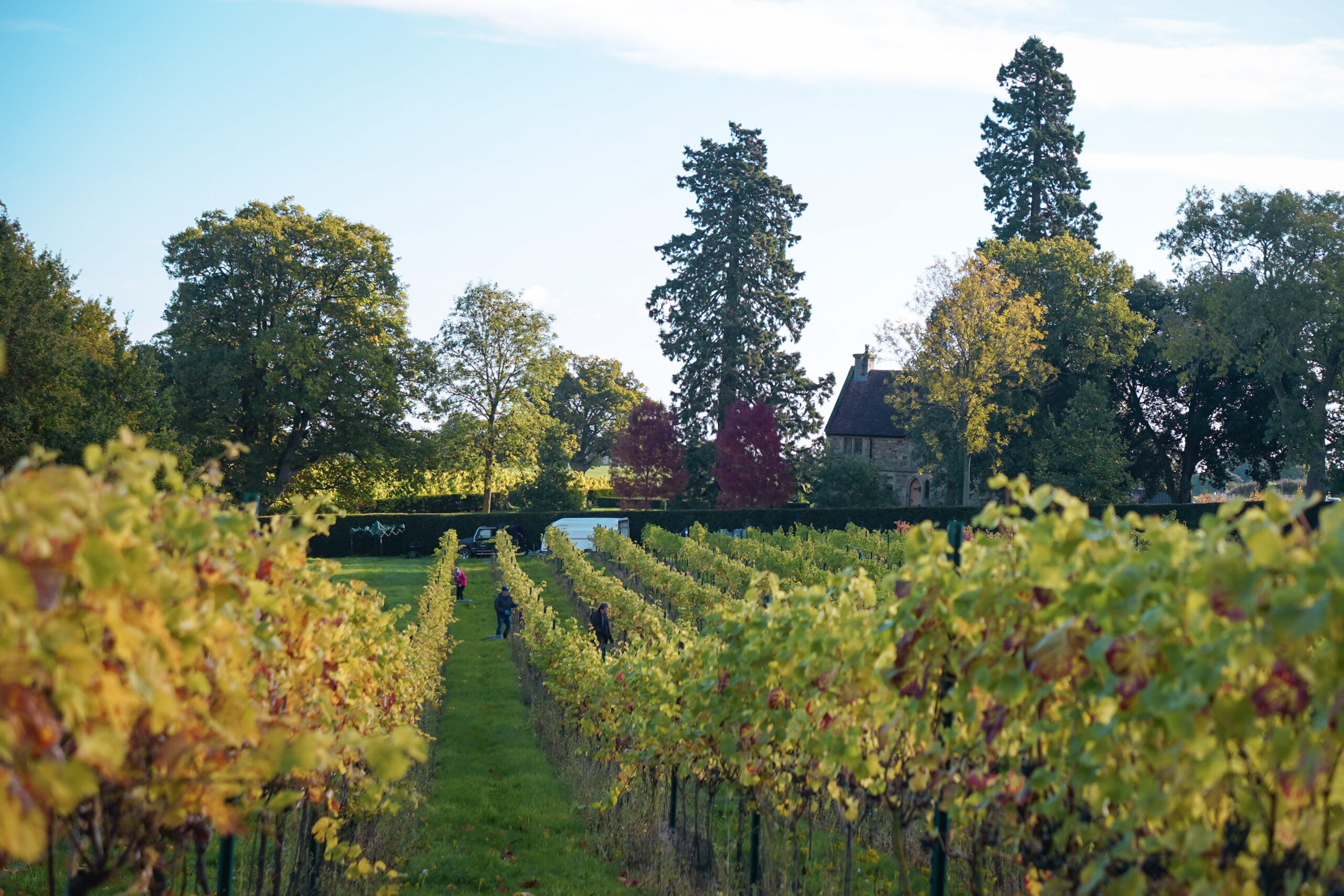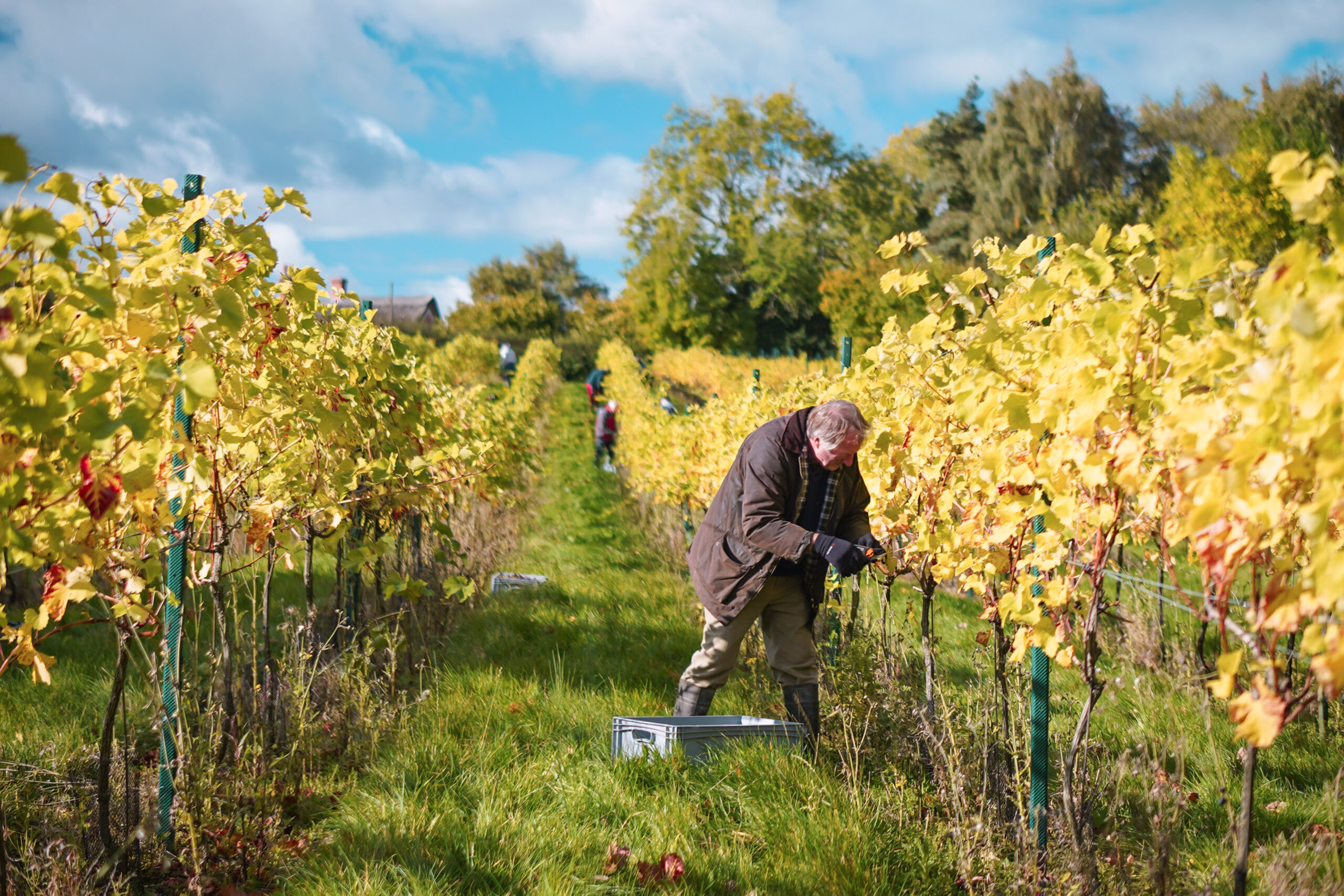-
The Best Pairings for English Sparkling Red Wine: A Guide from Colemere Vineyard, Shropshire
English sparkling red wine is a unique and exciting addition to the world of wines, offering a delicious twist on the traditional sparkling experience. Made from red grape varieties like Pinot Noir and Rondo, English sparkling reds are known for their vibrant fruit flavours, rich complexity, and lively effervescence. But just like any wine, finding the perfect food pairing can elevate your tasting experience and bring out the best in both the wine and the dish.
At Colemere Vineyard, we take great pride in producing high-quality English sparkling red wines that reflect the unique terroir of the region. If you’ve been lucky enough to try our sparkling red, you’ll know how versatile and food-friendly it can be. In this blog, we’ll explore the best pairings for English sparkling red wine, helping you enhance your tasting experience and discover exciting new flavour combinations.
Why English Sparkling Red Wine?
Before diving into food pairings, it’s important to understand what makes English sparkling red wine so special. Produced through the traditional method (the same method used for Champagne), this wine boasts a balance of rich fruit notes, refreshing acidity, and the effervescence that makes sparkling wines so enjoyable. English sparkling reds often showcase flavours of red berries, cherries, and plums, with subtle hints of spice and earthy undertones. This lively profile makes them ideal for pairing with a wide range of dishes, from bold meats to light canapés.
1. Charcuterie and Cured Meats
A classic pairing for sparkling red wine is charcuterie—a beautiful assortment of cured meats, pâtés, and terrines. The rich, salty flavours of meats like prosciutto, salami, or soppressata work wonderfully with the crisp acidity and vibrant fruit notes of sparkling red wine. The effervescence in the wine helps to cleanse the palate between bites, making each mouthful feel fresh and light.
- Prosciutto and melon: The sweet and salty combination of prosciutto and melon is a timeless pairing that complements the fruity notes in the wine.
- Sausage and pâté: The richness of sausages or pâté contrasts beautifully with the acidity of the sparkling red, creating a balanced and harmonious flavour experience.
2. Grilled Meats and BBQ
The lively effervescence and vibrant fruit character of English sparkling red wine make it an excellent companion for grilled meats and BBQ dishes. The rich, smoky flavours of grilled beef, lamb, and even BBQ chicken work wonderfully with the wine’s refreshing acidity, creating a bold yet balanced pairing.
- Grilled steak: The charred edges of a well-cooked steak pair perfectly with the tannin structure and red fruit flavours of sparkling red wine.
- BBQ ribs: The tangy, sweet BBQ sauce and the smoky meat complement the bright berry notes in the wine, creating a match made in heaven.
3. Rich, Earthy Flavours in Vegetarian Dishes
English sparkling red wine isn’t just for meat lovers—it also pairs wonderfully with vegetarian dishes, particularly those with rich, earthy flavours. The wine’s natural acidity and vibrant fruit notes provide a fresh contrast to the richness of vegetables like mushrooms, root vegetables, and squash.
- Mushroom risotto: The earthy richness of mushrooms, paired with the creaminess of a risotto, is beautifully complemented by the red fruit and acidity of sparkling red wine.
- Roasted root vegetables: Dishes like roasted carrots, parsnips, and beetroot provide an earthy sweetness that pairs beautifully with the fruit-forward notes of the wine.
4. Cheese Pairings for Sparkling Red Wine
Cheese and sparkling wine are a classic combination, and English sparkling red wine is no exception. The acidity and bubbles help cut through the richness and creaminess of cheese, while the fruity notes complement the flavours of the cheese.
- Aged Cheddar: The sharpness and intensity of an aged Cheddar work well with the vibrant berry notes of the wine, providing a satisfying contrast.
- Brie: A soft, creamy Brie with a hint of tanginess pairs perfectly with sparkling red wine, as the wine helps balance out the richness of the cheese.
- Goat’s Cheese: The tangy, earthy flavour of goat’s cheese complements the fruity and slightly spicy notes of the wine, creating a harmonious pairing.
5. Chocolate and Dessert Pairings
While sparkling red wine is often thought of as a savoury companion, it can also pair beautifully with certain desserts. The wine’s natural sweetness and fruit-forward flavours make it an excellent match for chocolate and berry-based treats.
- Dark chocolate: The bold, slightly bitter flavours of dark chocolate are a fantastic match for sparkling red wine. The wine’s acidity helps to balance the richness of the chocolate.
- Chocolate-covered strawberries: A romantic and delicious pairing, the fresh fruit notes in the sparkling red wine complement the sweet, rich chocolate.
- Berry tarts: Fruit-based desserts, such as a mixed berry tart or raspberry sorbet, work wonderfully with the wine’s vibrant red fruit flavours.
6. Asian Cuisine
Sparkling red wine also pairs beautifully with Asian cuisine, particularly dishes with bold, spicy flavours. The acidity and effervescence of the wine help to balance out the richness and spice, creating a refreshing contrast.
- Thai green curry: The spiciness and richness of a green curry are perfectly balanced by the bright fruit flavours and effervescence of English sparkling red wine.
- Sushi: The wine’s acidity and light bubbles make it a fantastic choice for pairing with fresh sushi or sashimi, especially those with a bit of spice, like wasabi or pickled ginger.
Conclusion: Enjoying English Sparkling Red Wine
English sparkling red wine is a versatile and exciting wine that pairs wonderfully with a wide range of dishes. From grilled meats and earthy vegetables to decadent chocolate desserts, there are endless possibilities for pairing this unique wine. At Colemere Vineyard, we take pride in crafting an exceptional sparkling red wines that showcase the best of Shropshire’s terroir.
Whether you’re hosting a dinner party, enjoying a casual meal, or simply relaxing with friends, our English sparkling red wine can bring out the best in any dish. So, the next time you open a bottle, experiment with these pairings and elevate your dining experience.
-
Vintage vs Non-Vintage Wine: What Does It Mean?
When exploring the world of wine, you may come across terms like vintage and non-vintage—but what do these terms really mean? For many wine enthusiasts and those new to wine, the terminology can sometimes be confusing. At Colemere Vineyard, we believe in making wine accessible and enjoyable, which is why we want to help you understand these terms and how they impact the wines we produce.
In this blog, we’ll break down the differences between vintage and non-vintage wines, and explain how each one contributes to the diversity and flavour profiles of the wines at Colemere Vineyard.
What is a Vintage Wine?
A vintage wine refers to a wine made from grapes that were all harvested in the same year. The term “vintage” not only refers to the specific year of harvest but also to the characteristics that come with it. For example, in some years, the weather conditions might be perfect for growing grapes, while in other years, a particular grape variety might struggle. As a result, each vintage has its own distinct flavour profile, which is a reflection of the conditions of that specific year.
At Colemere Vineyard, when we produce vintage wines, we carefully select the best grapes from a particular harvest. These wines often carry the signature flavours of that year, making them unique and reflective of the conditions in which the grapes were grown.
What You’ll Notice in Vintage Wines:
- Unique Flavour Profile: Each vintage will reflect the climate conditions, ripeness, and characteristics of the harvest, meaning that no two vintages are exactly alike.
- Aging Potential: Some vintage wines, especially reds, can age well due to their structure, tannins, and acidity, which evolve over time. Vintage sparkling wines, like those made from Pinot Noir and Chardonnay, can develop complexity and character as they mature.
- Higher Quality: Generally, vintage wines are considered to be of higher quality as they come from the best grapes of a specific year. The winemaker may also take extra care in crafting vintage wines, making them special releases.
What is a Non-Vintage Wine?
In contrast to vintage wines, non-vintage wines (often abbreviated as NV wines) are made from a blend of grapes harvested in different years. This blending technique allows winemakers to create a more consistent flavour profile, regardless of the variations in harvest conditions from year to year. Non-vintage wines are particularly popular in the world of sparkling wines, where consistency and balance are key.
What You’ll Notice in Non-Vintage Wines:
- Consistent Style: Non-vintage wines are designed to offer a consistent style and taste, regardless of the differences in grape harvests each year.
- Freshness and Drinkability: These wines tend to be more approachable in terms of flavour, making them perfect for drinking now. Non-vintage wines often showcase the fresh, bright fruit flavours that are typical of younger wines.
- More Affordable: Non-vintage wines are often more affordable than vintage wines, making them an excellent choice for those looking for quality wine at a more accessible price point.
Why Does Vintage vs Non-Vintage Matter?
So, why does it matter whether a wine is vintage or non-vintage? The key difference lies in the characteristics of the wine and the intended experience. Vintage wines are often reserved for special occasions because of their uniqueness, complexity, and aging potential. Non-vintage wines, on the other hand, are crafted for consistency and enjoyment on a more regular basis.
Our vintage wines are a reflection of the best grapes from a particular harvest, while our non-vintage wines provide a balanced and consistent experience year after year.
How Does This Apply to English Sparkling Wines?
In the world of English sparkling wine, both vintage and non-vintage wines play important roles. While vintage sparkling wines are made from grapes from a single year, non-vintage sparkling wines are made from blends of grapes harvested in multiple years. Non-vintage sparkling wines are often more widely available and offer a fresh, consistent taste, while vintage sparkling wines can offer greater depth and complexity.
Which Should You Choose?
- Go for a Vintage Wine: If you’re looking for a wine that has complexity, depth, and the ability to age well, then a vintage wine is the right choice. Vintage wines are often perfect for collectors, wine enthusiasts, or those celebrating special moments.
- Go for a Non-Vintage Wine: If you’re seeking a wine that’s easy-drinking, consistent, and perfect for casual enjoyment, then a non-vintage wine is the way to go. Non-vintage sparkling wines are excellent for everyday celebrations, casual gatherings, or enjoying with a light meal.
Conclusion: Celebrating the Best of Both Worlds
Whether you prefer the uniqueness of vintage wines or the consistency of non-vintage wines, Colemere Vineyard offers a range of wines that reflect the best of Shropshire’s terroir. Both styles have their place, and choosing between them depends on your preferences, occasion, and the type of wine experience you’re after.
Next time you’re in the mood for a glass of sparkling wine or a crisp white, consider whether you’d like to savour a wine that reflects the singular character of a particular vintage, or enjoy the smooth, consistent style of a non-vintage wine. No matter your choice, the wines at Colemere Vineyard will provide a delightful, memorable experience.
-
Pairings for English Dessert Wine: Elevate Your Wine Experience
English dessert wine is a true gem in the world of wines, known for its unique sweetness, complexity, and remarkable ability to complement a wide variety of foods. Whether you’re a connoisseur or a beginner, understanding how to pair English dessert wines with food can elevate your tasting experience and bring out the best in both the wine and the dish.
At Colemere Vineyard in Shropshire, we take pride in producing exquisite English dessert wines, which are made from grapes carefully nurtured in our local terroir. In this blog, we’ll explore some of the best food pairings for English dessert wine, highlighting how these wines can enhance your culinary experience.
What Makes English Dessert Wine Unique?
English dessert wines, often made from late-harvested or noble rot-affected grapes, offer a balance of rich sweetness and bright acidity. Varieties like Bacchus, Riesling, and Pinot Gris lend themselves well to dessert wines, offering a honeyed richness with notes of tropical fruit, citrus, and floral undertones. These wines are often lower in alcohol, making them a perfect choice for pairing with both sweet and savoury dishes.
1. Cheese Pairings for English Dessert Wine
One of the most sophisticated ways to enjoy English dessert wine is by pairing it with cheese. The rich, creamy textures of certain cheeses complement the sweetness of the wine, creating a beautifully balanced contrast of flavours.
- Blue Cheese: The bold, tangy flavours of blue cheese, such as Stilton or Roquefort, pair wonderfully with the sweetness of an English dessert wine. The sweetness cuts through the saltiness and creaminess, enhancing both the wine and the cheese.
- Brie or Camembert: Soft, creamy cheeses like Brie and Camembert pair well with dessert wines that have bright acidity and fruit notes. The smooth texture of the cheese and the honeyed sweetness of the wine create a delightful contrast.
- Goat’s Cheese: Fresh, tangy Goat’s cheese is another fantastic option. The acidity in the wine balances out the sharpness of the cheese, while the sweetness brings out the earthy undertones of the cheese.
Pro Tip: For a truly indulgent experience, try pairing your English dessert wine with a cheese board featuring a variety of textures and flavours. The combination of cheeses with different intensity levels will complement the wine beautifully.
2. Fruit-Based Desserts
English dessert wines are a natural fit for fruit-based desserts, as their acidity and sweetness enhance the flavours of the fruit. From fresh berries to baked apple pies, these wines bring out the best in fruit dishes.
- Tarts and Pies: A lemon tart or apple pie is a perfect match for an English dessert wine. The citrusy and buttery notes in the wine work well with the rich, tangy fruit in tarts, while its sweetness balances the tartness of the fruit.
- Poached Pears: The subtlety of poached pears is beautifully enhanced by the rich fruit and honey notes of dessert wine. A wine made from Riesling or Bacchus will accentuate the delicate sweetness of the pears.
- Berry-Based Sweets: Berries like strawberries, raspberries, and blackberries make an excellent pairing with dessert wines that have berry or citrus undertones. A simple mixed berry compote or chocolate-dipped strawberries can be the perfect dessert for your wine.
Pro Tip: Consider pairing your dessert wine with seasonal fruits. For example, a late-harvest Pinot Gris pairs wonderfully with autumn fruits like figs or blackberries, highlighting the natural sweetness of the fruit.
3. Chocolate Pairings with Dessert Wine
Chocolate and dessert wine are a match made in heaven. The richness of chocolate and the sweetness of the wine create a luxurious pairing, with the wine’s acidity cutting through the richness of the chocolate.
- Dark Chocolate: If you prefer dark chocolate, look for an English dessert wine with good acidity, such as Riesling or a late-harvest Pinot Gris. The complexity of the chocolate enhances the wine’s flavours, and the acidity helps balance the richness.
- Milk Chocolate: A milk chocolate dessert, such as chocolate mousse or chocolate truffles, pairs beautifully with a slightly sweeter English dessert wine. The round, honeyed sweetness of the wine complements the creamy texture of the milk chocolate.
- Chocolate and Berries: Combining chocolate with berries, such as in a chocolate raspberry torte, is a winning pairing with an English dessert wine. The wine will bring out the berry notes in the dessert while complementing the richness of the chocolate.
Pro Tip: Opt for a chocolate fondue paired with a dessert wine to create a decadent, shareable treat. This will highlight the smooth texture of the chocolate while allowing the wine to shine through with each dip.
4. Spicy and Savoury Pairings
While dessert wines are often associated with sweet treats, they can also pair well with savoury dishes, particularly those with a bit of spice. The sweetness and acidity of English dessert wines can help balance out the heat in spicy dishes.
- Spicy Asian Cuisine: Dishes like Thai green curry or Chinese five-spice chicken are fantastic when paired with a dessert wine like Bacchus. The wine’s fruity sweetness and acidity help to mellow the spice, creating a harmonious flavour profile.
- Foie Gras: For a truly indulgent pairing, try serving a rich, buttery dish like foie gras with English dessert wine. The combination of the rich, savoury flavours of the foie gras and the sweet wine is a luxurious experience.
- Savoury Baked Goods: Think about pairing your dessert wine with savoury baked goods such as cheese scones or bacon-wrapped dates. The sweetness of the wine balances the saltiness of these treats.
Pro Tip: When pairing wine with spicy food, be sure to look for a wine with balanced sweetness and acidity. This helps to neutralise the heat and enhances the flavours of both the food and the wine.
5. Nuts and Caramel Desserts
Nuts and caramel offer rich, nutty, and toasty flavours that are the perfect complement to the complexity of English dessert wines. Caramel-based desserts bring out the warm, honeyed notes in dessert wines.
- Tarte Tatin: This classic French caramelised apple tart pairs wonderfully with an English dessert wine, especially one made from late-harvest Pinot Gris or Bacchus, which offers rich fruit and honeyed flavours.
- Nut-Based Cakes: Cakes made with almonds or hazelnuts, such as an almond cake or hazelnut meringue, complement the rich, nutty flavours of dessert wines, especially those with toasty or caramelised notes.
Pro Tip: Try pairing a nutty dessert like baklava or pecan pie with an English dessert wine to accentuate the nutty, rich flavours of the dish.
Conclusion: Perfect Pairings with English Dessert Wine
English dessert wines are a delightful way to elevate any dining experience, whether you’re enjoying a sweet treat, a rich cheese, or a savoury dish with a bit of heat. The versatility of these wines allows you to experiment with a range of pairings, from classic cheese boards to decadent chocolate desserts, and even spicy or savoury dishes.
At Colemere Vineyard, we pride ourselves on crafting a delicious English dessert wine that pairs perfectly with a variety of foods. Whether you’re a fan of classic wine pairings or you like to experiment with new combinations, we hope these tips help you explore the world of English dessert wines and discover your perfect pairing.
-
How to Taste Wine Like a Pro: Tips from Our Vineyard Experts
Tasting wine is an art, and like any art form, it requires a bit of knowledge and practice to truly appreciate. Whether you’re a seasoned wine enthusiast or a complete beginner, tasting wine like a pro can help you understand the nuances and complexities of each glass you enjoy. At Colemere Vineyard, located in the heart of Shropshire, we’ve had the privilege of crafting a variety of wines with our unique local terroir. In this blog, we’re sharing expert tips from our vineyard team to help you taste wine like a true connoisseur.
1. Start with the Right Glassware
The glass you use plays a surprising role in how you experience wine. For the best tasting experience, choose a glass that allows you to swirl the wine comfortably, allowing the aromas to be released. A tulip-shaped glass is ideal because it narrows at the top, trapping the aromas and directing them towards your nose.
For white wine, use a glass with a narrower bowl to help maintain the wine’s crispness. Red wines, especially fuller-bodied varieties like Cabernet Sauvignon or Syrah, benefit from a glass with a wider bowl that allows the wine to breathe and reveal its depth of flavour.
2. Examine the Wine’s Appearance
Before you take your first sip, take a moment to look at the wine. Hold your glass at an angle and observe the wine’s colour and clarity. A deeper red might indicate a full-bodied red wine, while a light, pale yellow could suggest a crisp white or rosé.
In addition to colour, take note of the wine’s clarity. If the wine is cloudy or has visible particles, it might indicate issues with the wine’s production or ageing process. Ideally, a good wine will have a clean, clear appearance.
3. Give It a Good Swirl
Swirling your wine in the glass isn’t just a fancy move—it’s a key part of tasting like a pro. Swirling releases the wine’s aromas by allowing the volatile compounds to evaporate. This is where you get a sense of the wine’s character before you even taste it.
To swirl your wine properly, hold the base of the glass (not the bowl) and gently swirl it in a circular motion. If you’re unsure about swirling, don’t worry—it’s a skill that comes with practice! The key is to do it slowly enough that the wine doesn’t spill out of the glass, but fast enough to release the aromas.
4. Smell Before You Sip
The nose is one of the most important senses when it comes to wine tasting. Our sense of smell is directly linked to our sense of taste, so identifying aromas can provide a deeper understanding of the wine’s complexity. Close your eyes, take a deep sniff, and try to pick out the different scents.
With a glass of red wine, you might notice aromas of dark fruit, such as blackberries, cherries, or plums. White wines may have floral or citrus notes, while aged wines could carry hints of leather, tobacco, or oak.
Try to distinguish different layers of aromas—sometimes, the first sniff will bring one scent, but after swirling, you might detect something new. The more you practise, the more your nose will become attuned to the subtle differences between wines.
5. Take a Small Sip and Let It Breathe
Now that you’ve taken in the colour, clarity, and aromas, it’s time to taste the wine. Take a small sip and let the wine roll around your mouth, ensuring that it touches all areas of your palate. The taste of the wine should be balanced—there should be a harmony between the sweetness, acidity, tannins, and alcohol.
When tasting red wines, pay attention to the tannins, which give the wine its structure. Tannins are what create that drying sensation on your gums and the roof of your mouth. In white wines, you’ll focus more on the acidity and fruitiness. A good white wine should be crisp and refreshing, with lively acidity that balances any sweetness.
6. Focus on the Wine’s Finish
After you’ve swallowed the wine, take a moment to focus on the finish—the lingering taste left on your palate. A great wine will have a long finish, where the flavours evolve and persist for several seconds after swallowing. Wines with a short finish might feel less complex, while those with a long, evolving finish often signal high quality.
Try to identify the flavours that linger on your palate. Do you still taste the fruit, or has it evolved into something else? A wine’s finish can tell you a lot about its structure and balance.
7. Understand the Different Wine Styles
While tasting wine like a pro is about refining your senses, it’s also about understanding the wine style and its characteristics. Here’s a brief guide to help you identify the key elements in different wine styles:
- Red Wines: Typically full-bodied with more tannins and darker fruit flavours. Look for wines like Cabernet Sauvignon, Merlot, and Pinot Noir at Colemere Vineyard for a range of styles from light to full-bodied reds.
- White Wines: Often lighter, crisper, and fruitier. Varieties like Chardonnay, Sauvignon Blanc, and Pinot Grigio have distinct citrus or tropical fruit notes.
- Rosé Wines: Made from red grapes but with minimal skin contact, rosé wines often have refreshing acidity and delicate flavours of strawberry, raspberry, and melon.
- Sparkling Wines: These wines are characterised by their effervescence. Prosecco, Champagne, and English sparkling wines (like those made at Colemere Vineyard) offer bright acidity and fresh fruit notes, with bubbles that add to the mouthfeel.
- Dessert Wines: Typically sweeter, these wines have a higher sugar content and a richer flavour profile. They pair beautifully with cheese or desserts.
8. Pairing Wine with Food
One of the best ways to experience wine is through pairing it with food. A well-matched wine and food pairing can elevate both the dish and the wine. For example:
- Pair a crisp white wine like Chardonnay with seafood or creamy pasta dishes.
- Serve a full-bodied red like Cabernet Sauvignon with grilled meats or hearty stews.
- Enjoy a rosé wine with light salads, fresh seafood, or goat cheese.
At Colemere Vineyard, we offer some wonderful food pairing suggestions for our wines, so be sure to ask us about the best matches during your visit!
Conclusion: Tasting Wine with Confidence
With these pro tips, you’ll be tasting wine like an expert in no time. The key is to slow down, engage all your senses, and take the time to appreciate the flavours and aromas of each wine. At Colemere Vineyard, we’re passionate about sharing the art of wine tasting with our visitors, and we hope these tips help you make the most of your next visit. Whether you’re tasting our signature reds, whites, or sparkling wines, you’ll have the confidence to explore the world of wine with a deeper understanding and appreciation.
-
How Climate Change is Transforming Wine Production in England
Climate change is rapidly reshaping industries across the world, and one of the sectors seeing significant transformation is wine production. For a small vineyard in Shropshire, the effects of climate change are both challenging and exciting. England, traditionally known for its cooler climate, has long been a marginal region for wine growing. However, the recent rise in average temperatures and shifting weather patterns are beginning to change the landscape of English wine production in ways that are impossible to ignore.
The Changing Climate: Warmer Days and Longer Growing Seasons
Historically, the cooler British climate made it difficult to grow grapes that could produce high-quality wines. However, over the past few decades, climate change has brought warmer temperatures, creating a more favourable environment for viticulture. This shift has allowed vineyards, like those in Shropshire, to cultivate grape varieties that previously struggled to ripen.
With the growing season becoming longer, grapes now have more time to ripen, allowing for higher sugar content and more complex flavour profiles. Varieties that were once considered too risky for English vineyards, such as Pinot Noir and Chardonnay, are now thriving, leading to the production of more premium wines.
The Rise of New Grape Varieties in Shropshire
In Shropshire, vineyards are experimenting with different grape varieties to adapt to the changing climate. Varieties traditionally grown in warmer regions, such as the famous Pinot Gris and even some international varietals, are now being planted with great success. As the climate continues to warm, these varieties are able to achieve better ripeness and develop richer flavours, making them ideal for English wine production.
The benefits are two-fold for small vineyards in Shropshire. Not only does the warmer climate enable the production of higher-quality wines, but it also opens up opportunities for English wines to gain more recognition on the international stage. Shropshire, with its rolling hills and unique terroir, is becoming an increasingly desirable location for winemaking.
The Challenges: Unpredictable Weather and Extreme Events
While the warmer weather has brought some benefits, it also presents challenges. Extreme weather events such as unpredictable rainfall, droughts, and late frosts are becoming more common. These weather extremes can have a dramatic impact on the health of the vines, grape yields, and ultimately the quality of the wine.
For vineyards in Shropshire, these weather fluctuations mean that vineyard management practices must be adjusted frequently. For example, late frosts can damage young vines, and droughts can limit water supply, making irrigation systems more essential. These unpredictable weather events also make harvest timing more critical, as grapes need to be picked at just the right moment to preserve their flavour and balance.
Sustainable Practices: Adapting to the New Normal
As the climate continues to change, sustainability has become an even more crucial focus for vineyards. In Shropshire, many small vineyards are embracing eco-friendly practices to adapt to the shifting climate while minimising their carbon footprint. Techniques such as organic farming, rainwater harvesting, and the use of renewable energy sources are becoming increasingly popular among local vineyards.
In addition, adopting sustainable practices can help mitigate some of the risks posed by climate change. For example, drought-resistant grape varieties are being planted, and soil health is being prioritised to ensure that vines can better withstand extreme weather conditions. Moreover, reducing the use of pesticides and fertilisers helps improve biodiversity and soil health, contributing to the long-term viability of the vineyard.
A Bright Future for English Wine
Despite the challenges posed by climate change, the future of English wine production looks promising, especially for smaller vineyards in areas like Shropshire. With the ability to grow new, exciting grape varieties and the growing demand for premium English wines, the industry is poised for continued growth. As long as vineyards remain adaptable and committed to sustainable practices, they can continue to produce high-quality wines that rival those from more traditional wine regions.
Shropshire’s unique terroir, combined with the effects of climate change, presents a tremendous opportunity for the region to establish itself as a respected wine producer. As the English wine industry grows, so does its reputation, and Shropshire vineyards are in a prime position to take advantage of this transformation.
Final Thoughts
Climate change is transforming the landscape of wine production in England, and for small vineyards in Shropshire, this presents both challenges and exciting opportunities. Warmer temperatures, longer growing seasons, and the rise of new grape varieties are paving the way for higher-quality wines, while sustainable practices are helping to mitigate the risks associated with unpredictable weather patterns.
As English wine gains more recognition on the global stage, Shropshire’s unique terroir and innovative vineyard practices will continue to play a crucial role in this transformation. For vineyard owners and wine lovers alike, it’s an exciting time to witness the evolution of English wine production, and the future looks brighter than ever.
-
The Importance of Bud Rubbing in a Vineyard
As the vineyard season progresses, one of the essential tasks for vineyard owners and workers is bud rubbing. While it may seem like a simple task, bud rubbing is a critical part of vineyard management, especially for those growing grapes in Shropshire’s unique climate. Whether you’re new to viticulture or looking to perfect your vineyard’s maintenance routine, understanding the role of bud rubbing can help ensure your vines remain healthy, productive, and free of disease.
In this blog, we’ll explain what bud rubbing is, why it’s important, and how it plays a crucial role in maintaining your vineyard’s health and productivity.
What is Bud Rubbing?
Bud rubbing refers to the process of removing unwanted buds from a vine’s trunk or primary stems early in the growing season. After the vines have gone dormant in winter, they start to show signs of growth with the appearance of small buds. While some of these buds are intended to produce the fruit-bearing shoots, others may grow in undesirable places, such as along the trunk or the main stem, where they won’t contribute to the vine’s overall productivity.
Bud rubbing is the process of carefully removing these unwanted buds by hand or with a small tool, ensuring that the vine’s energy is directed toward the healthy, productive growth of the desired fruiting shoots. This is typically done in early spring before the vine starts putting significant energy into growth.
Why is Bud Rubbing Important for a Vineyard?
Bud rubbing may seem like a small task, but its benefits for the vineyard are significant. Here are the main reasons why this practice is so important:
1. Directs Energy to the Right Shoots
Vines are incredibly resourceful, but they can only produce so much energy. By removing unwanted buds, bud rubbing ensures that the vine’s energy is focused on developing the healthiest and most productive shoots. This helps the plant grow strong, robust fruiting shoots, which are essential for a successful harvest. For a small vineyard in Shropshire, this can mean higher-quality grapes, which translates to better wine.
2. Prevents Disease and Pests
In a vineyard, unwanted buds that are left to grow can become breeding grounds for disease and pests. By removing these buds early in the season, you reduce the potential for fungal infections, mold, and pests like aphids or mealybugs to take hold. This proactive approach to vineyard health can help reduce the need for chemical treatments, ensuring a more sustainable and organic approach to farming.
3. Improves Air Circulation and Sunlight Exposure
Bud rubbing helps maintain proper airflow and sunlight exposure around the vine. Excessive growth along the trunk or main stem can create dense clusters of leaves, limiting air circulation and blocking sunlight from reaching the lower parts of the vine. By removing these unnecessary buds, you allow the vine to grow in a more open, spaced-out way. This promotes better photosynthesis, strengthens the vine, and reduces the risk of fungal growth due to poor air circulation.
4. Maintains Vine Shape and Structure
One of the key components of good vine management is maintaining the shape and structure of the plant. Unruly growth along the trunk or stem can interfere with the vine’s overall form, making it harder to manage, prune, and train. By removing these extra buds, you ensure that the vine develops in a more orderly and manageable way, which will make tasks like pruning and trellising much easier later in the season.
5. Enhances the Quality of the Grapes
Healthy vines lead to better-quality grapes. When a vine is allowed to focus its energy on the best buds and shoots, it produces better-quality fruit. This is especially important for vineyards producing premium wines. By taking the time to carefully remove unnecessary buds, you are increasing the likelihood of having healthy, flavorful grapes that will make great wine, which is critical for maintaining a high-quality vineyard in Shropshire.
When Should Bud Rubbing Be Done?
Bud rubbing is typically performed during early spring, just as the buds begin to swell but before they have fully developed. The exact timing can vary depending on local climate conditions, but for Shropshire vineyards, it’s typically best to carry out this task in late March to early April. It’s important to catch the buds early, as waiting too long can result in damaged shoots or an uneven vine structure.
How to Perform Bud Rubbing
Bud rubbing is a delicate task that requires careful attention. Here’s a basic guide to performing the task:
-
Identify the Unwanted Buds: Look along the main trunk and primary stems of the vine for buds that are not in the optimal position or will not contribute to the vine’s productivity. These are the ones you want to remove.
-
Use Your Hands or a Small Tool: Gently pinch or rub off the buds. Some vineyard workers use a small pair of scissors or pruning shears, but it’s essential to be gentle to avoid damaging the vine.
-
Focus on the Main Stem: Concentrate your efforts on removing the buds along the trunk and primary stems. Keep the healthiest buds that are growing from the cordons (the horizontal arms of the vine).
-
Be Thorough: Go through the entire vine to ensure all unnecessary buds are removed. This is a time-consuming process but crucial for the vine’s health.
-
Check for Signs of Disease: As you rub off the buds, take the opportunity to check for any early signs of disease or pests, and take note of areas that may need closer attention.
Final Thoughts
Bud rubbing may be a small but essential part of vineyard management, especially for a small vineyard. By ensuring that your vines are focusing their energy on the best possible growth, you increase the chances of a healthy, productive crop and high-quality wine. Plus, the practice helps maintain the overall health of the vineyard, preventing diseases and pests from taking hold and improving airflow and sunlight exposure.
-
-
The Best Food Pairings for English Red Wine
The Best Food Pairings for English Red Wine
English red wine is having a moment—and it’s about time. Once overlooked in favour of international reds, English red wines are now earning praise for their elegance, freshness, and food-friendly character. Whether you’re enjoying a light-bodied Pinot Noir or a deeper, oak-aged blend, the right food pairing can truly bring your wine to life.
At Colemere Vineyard, we’re proud to produce English red wines that reflect the unique terroir of Shropshire. So if you’re wondering what to serve with your next bottle, here’s your go-to guide for the best food pairings for English red wine.
1. Roast Chicken and Root Vegetables
English reds—especially lighter styles like Pinot Noir or Rondo—pair beautifully with roast chicken. Add earthy vegetables like carrots, parsnips, and potatoes, and you’ve got an easy crowd-pleaser.
Why it works: The wine’s bright acidity and subtle tannins cut through the richness of the chicken and complement the sweet, roasted veg.
Wine tip: Try Colemere’s light-bodied red slightly chilled for a fresh twist on your Sunday roast.
2. Mushroom Dishes
Earthy flavours like mushrooms, lentils, and truffles are natural partners for English reds. Think mushroom risottos, wild mushroom tarts, or a hearty mushroom and lentil stew.
Pair with:
-
Creamy mushroom risotto
-
Wild mushroom and thyme tart
-
Portobello burgers with blue cheese
Why it works: The umami in mushrooms brings out the savoury, herbaceous qualities in red wine.
3. Lamb and Game Meats
Looking for something richer? Slow-cooked lamb, venison, or duck works beautifully with fuller-bodied English reds—especially those with a bit of oak influence.
Delicious pairings:
-
Herb-crusted rack of lamb
-
Venison stew with redcurrant jelly
-
Duck breast with blackberry sauce
Wine tip: A barrel-aged English red adds structure and depth to stand up to these bold flavours.
4. Cheeses that Love Red Wine
While many cheeses favour white or sparkling wines, there are plenty that pair nicely with English reds. Go for semi-hard and hard cheeses with nutty or savoury profiles.
Great with:
-
Mature cheddar
-
Red Leicester
-
Gruyère or Comté
Serve it with: A glass of Colemere red, some crusty bread, and chutney for the perfect cheese board.
5. Tomato-Based Pasta Dishes
The natural acidity in English red wine makes it a great match for tomato sauces. Whether you’re making a simple spaghetti Bolognese or a vegetarian lasagne, your wine won’t get lost in the mix.
Try it with:
-
Spaghetti with tomato and basil
-
Aubergine parmigiana
-
Baked penne with roasted veg and marinara
Why it works: Acidity meets acidity for a balanced, mouthwatering pairing.
6. Hearty Vegetarian Meals
You don’t need meat to enjoy red wine. English reds go wonderfully with rich, plant-based dishes that feature lentils, beans, roasted veg, or smoky spices.
Perfect pairings:
-
Lentil and bean chilli
-
Roasted aubergine with tahini
-
Beetroot and walnut salad with goat’s cheese
Wine tip: Slightly chill your red to lift the freshness—it’s especially good with plant-based meals.
7. Charcuterie and Tapas
For a relaxed evening in, red wine and nibbles always win. English reds pair especially well with salty cured meats, olives, roasted nuts, and sun-dried tomatoes.
Board inspiration:
-
Chorizo, salami, and Parma ham
-
Manchego or aged Gouda
-
Roasted red peppers and marinated mushrooms
Why it works: The wine’s acidity balances salt and fat while enhancing bold, savoury flavours.
Taste the Difference with English Red Wine
At Colemere Vineyard, we’re proud to champion the rise of English red wines. Grown with care in the Shropshire countryside and crafted with a light touch, our reds are designed to shine alongside food—whether you’re dining in or entertaining guests.
Final Thoughts
English red wine is all about elegance, freshness, and food-friendliness. Whether you’re pairing with a Sunday roast, a cheese board, or a midweek veggie meal, there’s a bottle out there waiting to elevate the moment.
Ready to pour something special?
Explore our range of wine at Colemere Vineyard and discover your next favourite pairing. -
-
The Best Food Pairings for English White Wine
The Best Food Pairings for English White Wine
English white wine has grown in popularity in recent years—and for good reason. With its crisp acidity, delicate fruit notes, and refreshing finish, English white wine is a natural match for a wide range of dishes. Whether you’re sipping a glass from a local Shropshire vineyard or exploring bottles from further afield, the right food pairing can elevate every sip.
Here at Colemere Vineyard in the heart of Shropshire, we know just how special a well-matched wine and food experience can be. Here are some of our favourite pairings that highlight the unique charm of English white wine.
1. Fresh Seafood and Shellfish
There’s a reason this classic pairing never goes out of style. The bright acidity and citrus notes found in many English white wines—especially Bacchus or Chardonnay—make them a perfect match for oysters, prawns, scallops, and grilled fish. Try pairing a chilled glass of Colemere White with:
- Lemon and herb grilled sea bass
- Oysters with shallot vinegar
- Prawn and avocado salad
Why it works: The zesty freshness of the wine balances the delicate sweetness of the seafood.
2. Soft Cheeses and Light Charcuterie
English white wine pairs beautifully with soft cheeses like goat’s cheese, Brie, and Camembert. These cheeses complement the wine’s floral and fruity notes without overpowering its subtlety.
Try it with:
- A creamy goat’s cheese tart
- Brie and apple on crusty sourdough
- A light charcuterie board with prosciutto and pickled vegetables
Wine tip: A lightly oaked Chardonnay or an aromatic white blend works best here.
3. Light Chicken and Herb Dishes
For a fresh and flavoursome meal, pair your white wine with herb-roasted chicken or a creamy chicken pasta. English white wines often have herbal undertones that mirror the flavours of thyme, parsley, or tarragon.
Delicious combos include:
- Lemon and thyme roast chicken
- Chicken in white wine and cream sauce
- Herby chicken Caesar salad
Perfect with: Colemere Vineyard’s dry white—its lively acidity cuts through the richness of the dish.
4. Vegetarian Dishes
Vegetarian dishes with fresh vegetables, creamy sauces, or mild spices can shine alongside English white wines. Think spring greens, asparagus, and courgette, all abundant here in Shropshire.
Pair with:
- Asparagus risotto
- Courgette and feta tart
- Spinach and ricotta stuffed pasta shells
Top pick: A vibrant English Bacchus to enhance the garden-fresh flavours.
5. Lightly Spiced Asian Cuisine
English white wine might not be your first thought for Thai or Vietnamese food—but it works wonderfully. Fragrant curries, noodle dishes, and sushi are enhanced by the fresh, slightly off-dry character of many English whites.
Great pairings:
- Thai green curry
- Vietnamese rice paper rolls
- Sushi with ginger and wasabi
Why it works: The wine’s gentle sweetness and acidity balance spice and umami flavours.
Experience English White Wine at Its Finest in Shropshire
At Colemere Vineyard, we’re proud to produce a range of English still and sparkling wines that reflect the unique climate and soil of Shropshire. Our white wines are crisp, aromatic, and crafted to pair beautifully with food.
Final Thoughts
Whether you’re preparing a summer dinner party or just enjoying a quiet evening meal, the right food pairing can bring out the best in your English white wine. From seafood to soft cheese, vegetarian dishes to Asian flavours, there’s a perfect match waiting for every bottle.
-
The Art and Science of Vineyard Pruning
The Art and Science of Vineyard Pruning: Unlocking the Potential of Every Vine
Pruning is one of the most important jobs in a vineyard. Here at Colemere Vineyard, tucked away in the beautiful Shropshire countryside, we know that proper pruning is the secret to growing top-quality grapes and making delicious wines. But what exactly is pruning, and why does it matter so much?
In this blog, we’ll take you through the basics of vineyard pruning—what it is, why we do it, and how it helps us craft the wines you love.
What is Vineyard Pruning?
In simple terms, vineyard pruning means trimming back the previous year’s growth to guide how the vine grows in the next season. We do this during the vine’s dormant period—usually between January and March—when the plant is having its winter rest.
Why bother? Well, if we left the vines to grow wild, they’d produce too many leaves and too much fruit, which would lower the quality of the grapes. Pruning helps us keep the vines healthy, the grape clusters perfect, and the vineyard easy to manage.
Why is Pruning Essential for Quality Wine?
Pruning isn’t just about keeping things tidy—it has a direct impact on the grapes and the wines they become. Here are a few reasons why it’s so important:
- Better Quality Grapes: By controlling how many grape clusters the vine produces, we make sure the plant focuses its energy on fewer but better grapes.
- Perfect Ripening: With fewer leaves and shoots to feed, the vine can put all its effort into ripening the grapes. This means better sugar levels, balanced acidity, and more concentrated flavors.
- Healthier Vines: Less foliage means better air circulation and more sunlight, which helps prevent fungal diseases that thrive in damp, shady spots.
- Vine Longevity: Regular pruning keeps the vines in good shape for the long haul—healthy vines can produce amazing grapes for decades!
Key Pruning Methods
There are a few different ways to prune a vineyard, depending on the grape variety and the local climate. At Colemere Vineyard, we use methods that work best for our vines and Shropshire’s weather.
- Spur Pruning: This involves cutting back the vine to short spurs with 1-3 buds. It’s a great method for controlling growth and is commonly used in cooler climates.
- Cane Pruning: With cane pruning, we leave a couple of longer canes (each with 8-12 buds) to produce next season’s growth. This works well for vigorous vines and helps us manage yields.
- Guyot System: A popular form of cane pruning where one or two canes are trained along a horizontal wire. It’s perfect for maximizing sun exposure and air circulation.
- Double Cordon: This spur-pruning method uses two permanent horizontal arms. It’s ideal for keeping things organized and controlling vine vigor.
Timing Matters: When Do We Prune?
Getting the timing right is crucial. We prune our vines during their dormant period—between January and March—when they’re in their winter slumber. This reduces stress on the plant and helps prevent disease. Prune too early, and the buds might sprout too soon; prune too late, and it can delay the vine’s growth.
The Vineyard’s Annual Cycle and Pruning
Pruning is just the first step in the vine’s yearly journey. Here’s a quick look at what happens throughout the year:
- Winter (Dormancy & Pruning): The vines rest, and we prune to guide their future growth.
- Spring (Bud Break): New shoots start to emerge as the weather warms up.
- Summer (Flowering & Fruit Set): Tiny blossoms develop into grape clusters.
- Autumn (Harvest): We pick the ripened grapes and start the winemaking process.
Pruning for the Future
At Colemere Vineyard, we see pruning as both a craft and a science. Every cut we make shapes the future of our vines and the wines they produce. With careful pruning, we can create elegant still, sparkling, and dessert wines that reflect the unique character of Shropshire.
-
English Sparkling Wine vs. Champagne: What’s the difference?
English Sparkling Wine vs. Champagne: What’s the Difference?
When you think of sparkling wine, Champagne might be the first thing that comes to mind – but did you know that English sparkling wine is making waves as a serious contender? At Colemere Vineyard, nestled in the beautiful Shropshire countryside, we take pride in crafting sparkling wines that stand shoulder to shoulder with their French counterparts. But what exactly sets English sparkling wine apart from Champagne? Let’s uncork the facts!
1. The Origin Story: England vs. France
The most obvious difference? Location, location, location. Champagne can only be called “Champagne” if it comes from the Champagne region of France. English sparkling wine, on the other hand, is produced right here in England – including at Colemere Vineyard, where our carefully nurtured vines deliver vibrant, fresh flavors unique to the Shropshire terroir.
2. The Climate Factor
Believe it or not, southern England shares a similar climate to Champagne. Cool temperatures are ideal for growing the classic grape varieties used in sparkling wine, like Chardonnay, Pinot Noir, and Pinot Meunier. Shropshire’s temperate climate and rich soil allow us to cultivate grapes with crisp acidity and bright fruit notes – perfect for crafting elegant sparkling wines.
3. The Traditional Method
Both Champagne and English sparkling wine use the traditional method (also known as “méthode traditionnelle”) to achieve those delicate bubbles. This labor-intensive process involves a secondary fermentation in the bottle, creating complex flavors and that signature fizz.
At Colemere Vineyard, we follow this time-honored technique to ensure every bottle of our sparkling red, white, and rosé wines delivers the same luxurious mouthfeel and fine mousse you’d expect from a premium bubbly.
4. Flavour Profiles: What to Expect
While Champagne is known for its toasty, nutty flavors and hints of citrus, English sparkling wines often showcase fresher, fruit-forward notes thanks to the cooler climate. At Colemere Vineyard, our sparkling wines balance zesty citrus and orchard fruit aromas with a refined, creamy texture – perfect for celebrating any occasion.
If you’re after something truly unique, our sparkling red wine offers a bold, rich twist on tradition. It’s a showstopper for dinner parties and pairs beautifully with hearty dishes.
5. Sustainability and Craftsmanship
English vineyards, including Colemere, often prioritise sustainable farming and small-batch production, allowing for greater attention to detail. Every bottle of our sparkling wine is a reflection of the care and craftsmanship that goes into every stage – from vineyard to glass.
6. Price Point: Affordable Luxury
While vintage Champagne can command sky-high prices, English sparkling wine offers exceptional quality without breaking the bank. Our sparkling range at Colemere Vineyard provides an affordable way to enjoy artisan-crafted bubbles without sacrificing flavour or finesse.
Ready to Taste the Difference?
If you haven’t experienced the magic of English sparkling wine, there’s no better time to explore. At Colemere Vineyard, our collection of still and sparkling wines – including our rare sparkling red – is crafted with passion and precision, offering you a true taste of Shropshire. The sparkling rosés also a personal favourite, followed by our elegant sparkling white.

